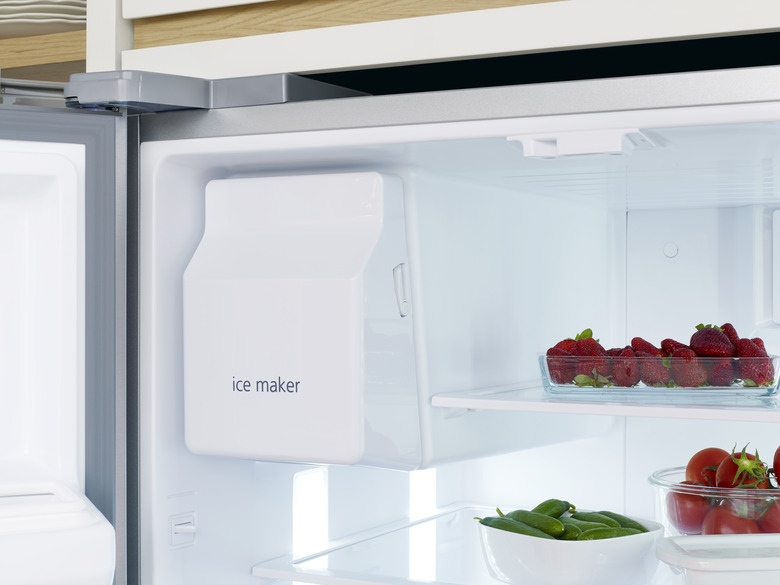How To Adjust The Water Level On An Ice Maker
We may receive a commission on purchases made from links.
Many beverages taste better with ice cubes, but if your ice maker isn't producing ice properly, you can end up with anything from no ice to a solid slab of ice. Adjusting the water level on your ice maker is a quick fix that can solve many of your ice output problems. If you have low water pressure, or a leak in your ice maker, you may need more extensive repairs and/or to call a maintenance technician. However, for basic issues with the size and production of your ice, adjusting the water level should be enough.
The appearance of your ice is a big clue to the need for adjusting the ice maker's water level. If your ice maker is making ice that's hollow inside, cubes that are larger than normal or a solid chunk of ice instead of individual cubes, it's time to make the adjustment. Hollow or smaller-than-normal cubes indicate a low-fill problem, and larger-than-normal cubes or ice that's fused together in one large piece indicate an overfill problem.
Make Minor Water Level Adjustments
1. Remove the Ice Maker Cover
Pop the front cover off your ice maker — if there is a front cover — with a flat-head screwdriver. Consult the User Manual for proper removal steps.
2. Adjust the Set Screw
Turn the small adjustment set screw on the upper, middle right hand side of your ice maker a half of a turn with a Phillips or flat head screwdriver, depending on the screw your ice maker has. Turning the screw clockwise will decrease the water level and turning it counterclockwise will increase the water level.
3. Check the Ice Production
Replace the cover on your ice maker and monitor the ice output. You may need to repeat the above steps to reach your desired level of ice production.
Make In-Depth Water Level Adjustments
1. Remove Ice Maker From Refrigerator
Unplug your refrigerator and pull out the ice maker by removing it from its hooks, or unscrewing it from below, and place it in the sink for any residual ice to melt.
2. Remove the Ice Maker Cover
Pop the front cover off your ice maker with a flat head screwdriver. If there is a screw in the middle of the cover, use a Phillips screwdriver to remove it.
3. Perform a Test Cycle
Manually run what DavesRepair.com calls a "harvest cycle" test run, by grasping the circular ejector and rotating it clockwise until you hear a click. The test cycle will run, just make sure the ice-sensing lever, or bail, has room to raise and lower during the test.
4. Adjust the Set Screw
Depending on the result of the ice output from your test run, you can now adjust the water level with the same set screw technique listed in Section 1, Step 2 above. Run another test cycle when finished with your ice maker adjustments to be sure the ice production is satisfactory.
5. Return Ice Maker to Refrigerator
Place the cover back on your ice maker, return it to its position in the refrigerator and plug the refrigerator back in.
